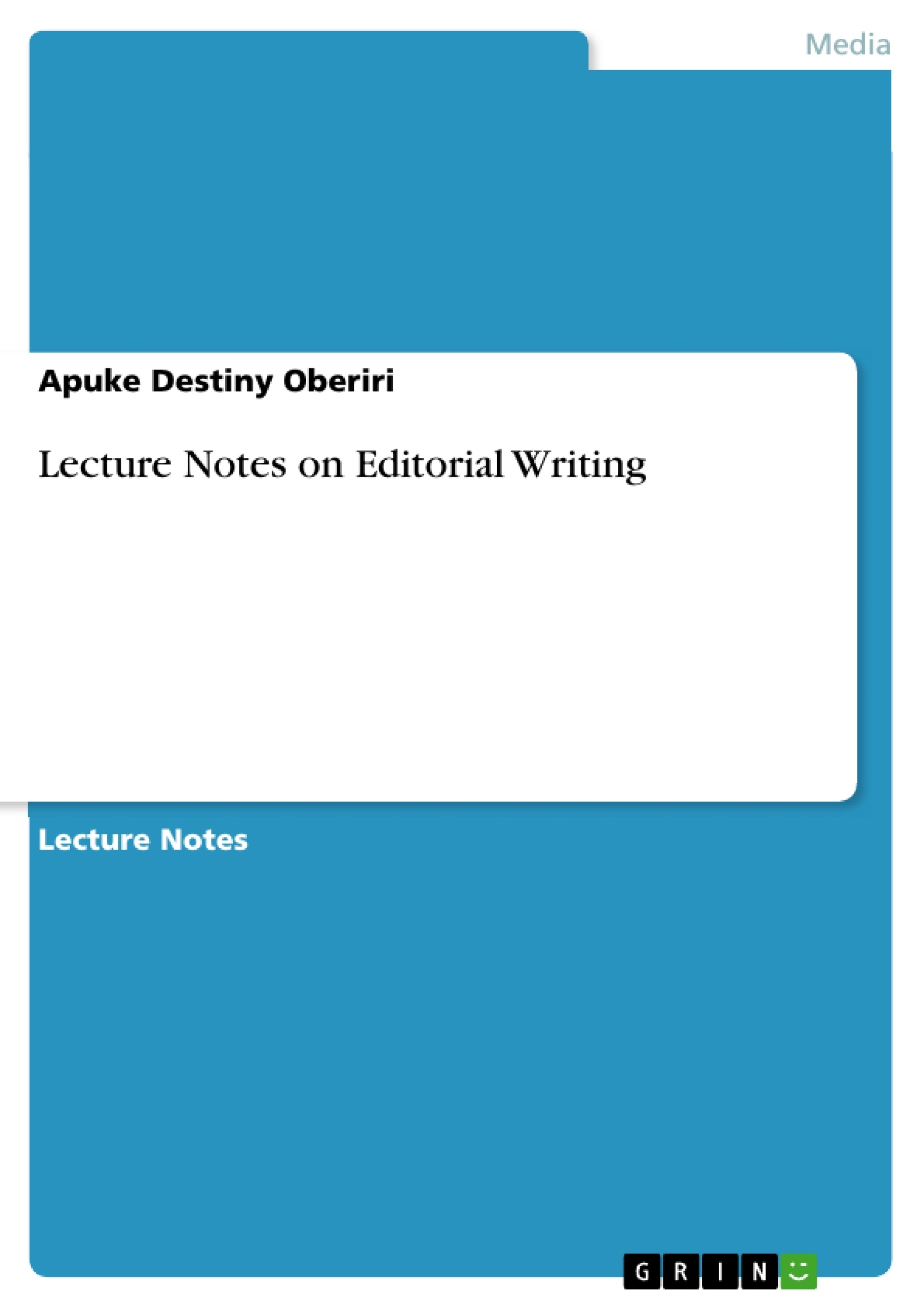It is quite acceptable that journalists and mass communicators primarily have the responsibility of informing, educating and entertaining members of the society. As an institution, the mass media could set agenda, preserve cultural heritage, as well as confer status on individuals or institutions in the society. To achieve these, however, different approaches, such as news reporting, features writing, news analysis, editorial writing and news commentaries, could be employed by journalists. This lecture explores editorial writing with particular emphasis on its meaning, history, characteristics and nature.
At the end of this unit, you should be able to:
- Define what an Editorial is;
- Know the history of Editorials;
- Explain the characteristics of Editorials;
- Describe the nature of Editorials
Frequently Asked Questions About Editorial Writing
What is an editorial?
An editorial is the corporate voice of a media organization on a given issue of public interest. It is an explanatory text presenting the newspaper's opinions and aiming to lead readers to informed decisions.
What are the key objectives covered in this course outline?
The objectives include defining editorials, understanding their history, explaining their characteristics, and describing their nature.
What are some qualities of a good editorial?
A good editorial possesses institutional flavor, plain and unambiguous language, exactness and directness, human interest orientation, a catchy and attention-arresting style, originality in tone and substance, thorough research, and factual, concrete content.
How do editorials relate to public opinion?
Editorials play a significant role in shaping public opinion by criticizing socio-political and economic issues, illuminating important intelligence, bringing forth debatable issues, defending the underdogs, and influencing policy formulation.
What are the differences between editorials and other forms of writing like news, features, and columns?
Editorials are the corporate voice of a media organization on given issues of public interest. Editorials are based on expression or corporate opinion which usually interprets issues from a deeper out-look and entertains the average reader with its substance and depth of analysis.
News is objective and fact based, and generally news is created by an event whereas an editorial is created from a subject found in News.
Features offer a more creative and in-depth perspective but usually are bylined which differs from editorials.
Columns reflect the writer's personality and style unlike institutional flavors in editorials.
What are the different types of editorials?
The basic types are Interpretative, Controversial, and Explanatory. Interpretive editorials explain issues, controversial editorials advocate a specific viewpoint, and explanatory editorials present issues for the reader's judgment.
What are some sources for editorial materials?
Editorial materials can be sourced from topical events reported in mass media, the Internet, public and printed records, social functions, law enforcement officers, experts, files, libraries, and specialized sources.
What are the qualities of a good editorial writer?
Intellectual curiosity, analytical mind, mastery of language, care for details, good knowledge and professional skills of writing for mass media, rational reasoning, knack for research, and a nose for news.
What is the typical structure of an editorial?
A typical editorial has four parts: Title, Introduction, Body, and Conclusion. The Title is active and arresting. The introduction is often called the lead and must be captivating to entice the reader. The body is the meat and substance of the editorial. The conclusion reaffirms the positions or ideas previously made clear in the editorial.
What are some guides for good editorial writing?
Get all your facts at your finger tips before making an outline of the editorial, Be exhaustive in your fact finding for purposes of objectivity. Let there be consistency in your paper's editorial opinions. Be upright in your views and aggressive in your expression to drive your point home. A good and respectable newspaper is not obscene in its use of language in its editorials.
What factors determine the subjects of editorials?
Topics should be relevant and timely, local but not parochial, drawn from socio-political and economic issues, and could be borne out of the desire to amaze or amuse.
What are the different types of editorial audiences?
These include the very skeptical audience, the very selective audience, and the obscure or obstinate audience, each requiring a different approach from the writer.
What are the components of an editorial page layout?
Components include editorial cartoons, photographs, letters to the editor, wider columns, white space, and typographical devices.
What are some ethics of editorial writing?
Editorial independence, accuracy and fairness, respect for privacy, decency, avoiding discrimination, avoiding rewards and gratification, avoiding the glorification of violence, avoiding plagiarism and respecting copyright. Respecting children and minors. Providing Access to information, respecting the National interest. Upholding social responsibility.
- Quote paper
- Apuke Destiny Oberiri (Author), 2016, Lecture Notes on Editorial Writing, Munich, GRIN Verlag, https://www.grin.com/document/338528




